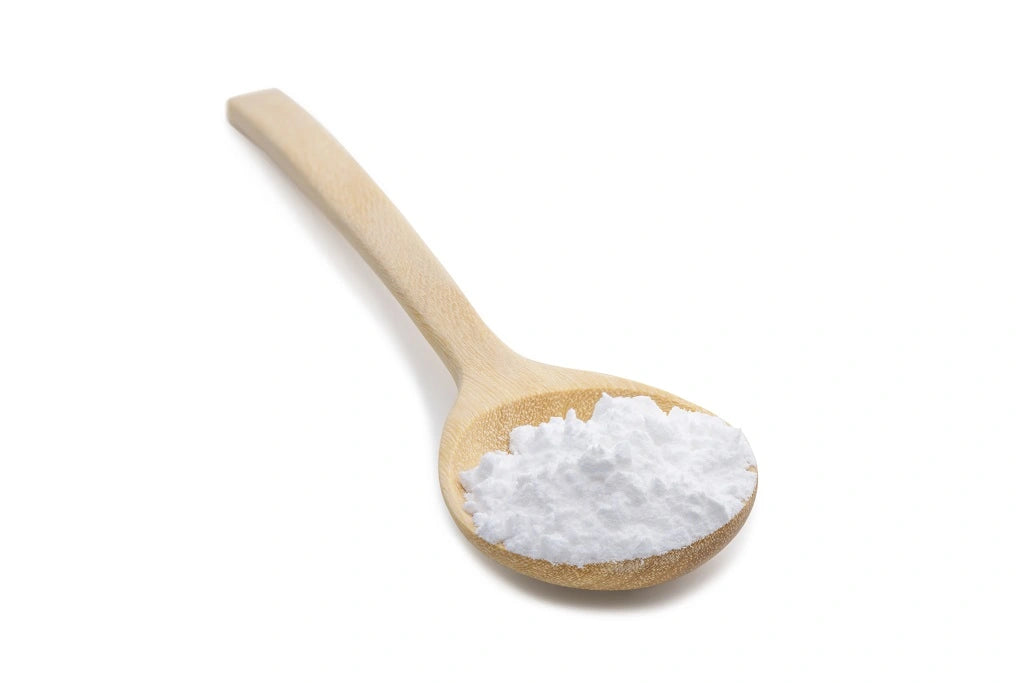- Sodium Cocoamphoacetate
- Sodium Lauroamphoacetate
- Disodium Cocoamphoacetate
These sulfate-free surfactants are mild on your skin and can be readily included in your regular hair care regime.
In this blog, we will discuss the more commonly used surfactant, i.e., Sodium Cocoamphoacetate, and its benefits and uses in hair care products.
What is Sodium Cocoamphoacetate?
An amber liquid that is derived from coconut oil, Sodium Cocoamphoacetate is an amphoteric surfactant. Sodium cocoamphoacetate has a hydrophilic head and a hydrophobic tail, which attracts water and oil. It has got a fruity fragrance. It aids in blending the other ingredients of the formula, effectively removing dirt, grime, and impurities to be washed off easily. It is gentle on your skin and is a better alternative to harsh surfactants such as Sodium Lauryl Sulphate (SLS), which damage your strands by stripping them of the natural oil, making your scalp and hair dry. Its solubility in water prevents molecules from sticking together, making it slippery when they come in contact with it. This anionic surfactant has powerful cleansing properties when dissolved in water and mixed with other ingredients such as essential oils; when included in hair care products provide various benefits such as antioxidant protection or anti-fungal benefits.
As part of being an excellent amphoteric surfactant, Sodium Cocoamphoacetate is an excellent conditioner, foam booster, and viscosity builder in your natural hair care products. As it is gentle on the skin, Sodium Cocoamphoacetate is used in soaps and body washes formulated for babies.
Benefits of Sodium Cocoamphoacetate in haircare
As people are more aware of the ingredients used in their skincare or haircare products, the demand for sulfate-free and paraben-free hair care products is on the surge in the beauty industry. Answering the call for a safe and mild alternative for sulfates in hair care products is Sodium Cocoamphoacetate. Let's elucidate the beneficial properties of Sodium Cocoamphoacetate in hair care products and what makes it a beloved haircare ingredient.
1. Gentle cleansing
It cleans effectively by binding with dirt, grime, and other impurities, eliminating buildup, impurities, and other toxic substances from the surface. This surfactant enhances the cleansing action of shampoos.
You can use cocoamphoacetate-infused Curlvana Curly Hair Shampoo to cleanse product buildup, dirt, and grime gently.
Buy Curlvana Curly Hair Shampoo
2. Hydrating
Sodium Cocoamphoacetate is an amphoteric surfactant that is a cleansing and conditioning agent in your haircare product. It does not deprive your hair of its natural oils, thus retaining your hair's and scalp's hydration level. It makes your hair visibly soft, smooth, and silky.
3. Gentle on scalp
By binding with impurities and lathering them up, it gently cleanses the scalp without irritating it. As a result of its mild cleansing action, your hair will not lose its natural oils, preventing dry scalp conditions.
4. Viscosity builder
It improves the thickness of the product, making it look rich, creamy, and thick. It improves the texture of your product, making it look more appealing to your senses.
How to use Sodium Cocoamphoacetate in haircare
Sodium Cocoamphoacetate, an amphoteric surfactant, can be found in a cleansing haircare product. It binds with water and oil, eliminating dirt and grime from the surface. You can find this gentle cleanser in baby shampoos. Experts say Sodium Cocoamphoacetate products have no significant side effects and are considered safe.
Sodium Cocoamphoacetate is used as a thickening agent and a foaming agent. Sodium Cocoamphoacetate can be combined with other cleansing agents to increase their foaming properties and add stability to the product formula. Due to its beneficial properties of Sodium Cocoamphoacetate, it is used in cleansing and styling hair care products such as shampoos, conditioners, deep conditioners, mousse, and all-purpose cleaners.
How to identify Sodium Cocoamphoacetate in haircare products?
Sodium Cocoamphoacetate may appear in your haircare products under the following names: Glycine, N-coco-acyl derivatives, monosodium salts, Glycine, N-(2-aminoethyl)-N-(2-hydroxyethyl)-. If you come across any of these terms, you can be assured that your haircare product has Sodium Cocoamphoacetate.
Other ingredients compatible with it
It works well with other cleansing and hydrating ingredients in your hair care products. It works well with other cationic, anionic, and nonionic surfactants in your products, thus enhancing the efficacy of the product formula.
Side effects of Sodium Cocoamphoacetate
Sodium Cocoamphoactete is a non-toxic, low-hazard ingredient that is safe for cosmetic use. As per a clinical study, a concentration of 10% Sodium Cocoamphoacetate is neither an irritant nor a sensitizer.
Sodium Cocoamphoacetate is believed to be suitable for topical application. Since it is a natural surfactant derived from coconut oil, Sodium Cocoamphoacetate is soft and gentle to the skin. While it is a natural component, it may sometimes cause skin irritation in those who have sensitive skin. Therefore, it is best to determine if you have allergic reactions to Sodium Cocoamphoacetate by conducting a patch test. As per experts, Sodium Cocoamphoacetate has been identified as a safe cosmetic ingredient and is utilized in various products for skincare, haircare, and personal care products.
Dry, rough, and frizzy hair can be challenging to manage, but Sodium Cocoamphoacetate can improve the texture of your hair, adding bounce, volume, and shine. This will allow you to manage your hair in a better way.
By now, you know the benefits of Sodium Cocoamphoacetate to your hair and how to incorporate it into your daily routine effectively. Choosing the right products for your hair goes a long way in maintaining hair and scalp health.
Also Read :
Cocamidopropyl Hydroxysultaine
All the content published on www.Curlvana.in is solely for information purposes. It is not a substitute for professional medical advice, diagnosis, or treatment. Always consider seeking the advice of your physician or a qualified health care provider. The information, suggestion, or remedies mentioned on this site are provided without warranty of any kind, whether express or implied.




